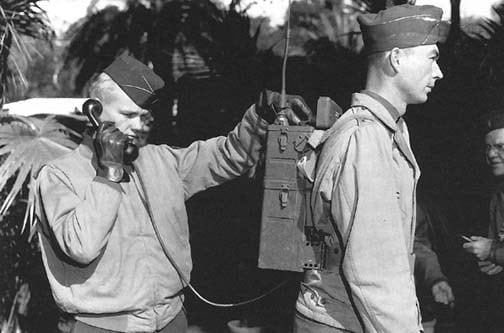The Defense Department is continuing to break down digital barriers, this time unveiling an open data project. Data.mil — a cooperative project with Data.world, a data resource organization — and the Defense Digital Services within the Pentagon seek to make military data available and searchable.
The first data sets made publicly available on Data.mil include a Theater History of Operations involving data sets of aerial bombings from World War I through the Vietnam War. The DoD has had an open data effort for a while, but it didn't garner much attention, Mary Lazzeri of the Defense Digital Service and Data.mil co-creator told C4ISRNET in a recent interview. Lazzeri said they wanted to make a website that could feature data in a way that was compelling for members of the public, as well as to make the case to the rest of the agency that open data merits investment.
The Data.mil initiative was the brainchild of Maj. Aaron Capizzi, and was just a 20 percent project, meaning the project was done on the side, Lazzeri said. This type of Silicon Valley culture is exactly what Secretary of Defense Ash Carter has tried to foster with DDS, allowing folks from the tech sector to come into the Pentagon for a "tour of duty" to work on complex problems.
Data.mil was also stood up with a minuscule budget and went online in just three weeks. What’s so innovative about this approach, said Ian Greenleigh, head of brand at Data.world, is that typically when government agencies release open data, they stop at accessibility, meaning they don’t put the data sets into a format that can easily be analyzed. With Data.mil, the data is presented in tabular format, as opposed to KML files such as Google Earth.
DoD is also making sure "to provide an environment that adds context so that the data can easily be understood, which is often lacking with open data programs around the world where it’s just here’s a file, no additional information; it doesn’t tell you where it’s from or how it’s been analyzed or used in the past," he added. "What I really admire about this particular effort with THOR is that all these issues we see with open data generally have been taken care of with a single effort with almost no budget. That’s pretty incredible."
Greenleigh noted how the data in the THOR project present a unique way to tell stories. Data scientists affiliated with the effort began looking at historical events in the theaters of war that could be associated with the data. For example, within the Vietnam data set is Sen. John McCain’s downed flight that led to his capture as a prisoner of war.
"That is extraordinary," Greenleigh said. "I’ve never had this experience with data before, to know a story and look for it in a massive data set and be able to see all the aspects represented in front of you."
In terms of actionable information and usefulness from the Pentagon’s perspective, Lazzeri said some of the next steps are to release more strategic data such as acquisition, logistics, procurement, budget and manufacturing data, to name a few.
"There’s a number of data sets that will be more useful throughout the military to be able to take a look at the raw data in certain areas, and that will help them solve some of those complex problems," she said. The data could also be used from an education and planning perspective when viewing how targeting evolved from World War II to through precision munitions and to today; the Pentagon has tried to take more extraordinary measure to protect civilians, even amending its Law of War Manual to afford greater protection.
From a non-military perspective, Greenleigh said researchers could study weather patterns dating back to World War I, given that robust records of weather are necessary when flying.
"That was something that was personally interesting for me was looking at all the weather events across these theaters of war," he said.
This initial data set was really experimental, Lazzeri said, to see if DDS could spark interest in open data.
"We don’t have a budget. DDS is not looking to launch a robust open data program. We’re hoping there are other areas where we can feed this info into parts of DoD and the services to help them put their data online," she said. "We put it out there without a plan for how it will be used with the notion that researchers can take it where ever it can go."
Stringent requirements are also in place to secure the database from potential intrusions. Data can only be changed by contributors, and there are strict standards even for that, Greenleigh said. Greenleigh also expressed doubt regarding the possibility of the data being manipulated or used for malicious purposes. The data links back directly to the source and lives on Data.mil as well as Data.world, he said. That means if data was ever to be changed and rereleased, it can be compared to the original source.
Mark Pomerleau is a reporter for C4ISRNET, covering information warfare and cyberspace.








